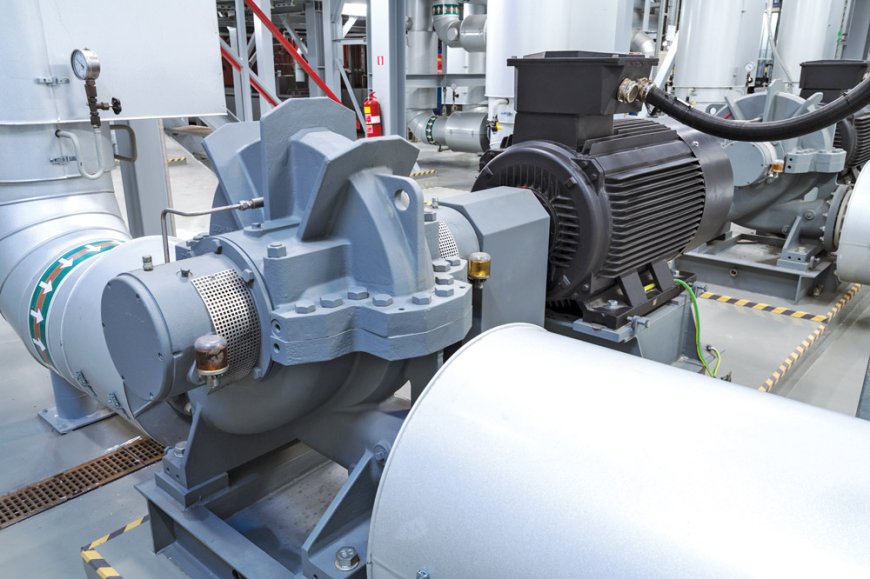Smart solutions for a thirsty nation: the future of water management

Anil Sethi
Chairman, Pump Academy Pvt Ltd
How challenging is the current demand-supply scenario of water in India for domestic and commercial/industrial use?
India faces a significant challenge with water scarcity to meet the growing demands of both domestic and industrial sectors. Declining water resource is becoming a major challenge across India affecting households and businesses considerably.
A water ministry report estimates India's water demand will rise by 34% by 2025 and 78% by 2050, creating a 30% gap between demand and replenishment. Rapid groundwater depletion worsens the shortage, threatening long-term water security. Uneven distribution of water resources adds to the problem, with some areas facing floods while others suffer from prolonged droughts.
Inefficient water use and lack of wastewater recycling worsen the supply-demand gap. To meet this challenge, India must enhance water management by improving infrastructure, increasing efficiency, adopting modern technology, optimizing treatment plants and pumping systems, and reducing water loss.
What is the importance of bringing in more awareness about water security among consumers?
The informed consumers are more likely to act in their daily lives to conserve this valuable resource. This awareness can lead to significant reductions in overall water consumption as individuals and industries will adopt water-saving practices and invest in water-efficient technologies.
From an environmental perspective, consumers who understand the connection between their water usage and the health of ecosystems are more likely to adopt practices that protect water bodies and surrounding habitats, fostering a sense of responsibility.

How is the progress of water infrastructure development in the country? What kind of improvements are needed?
India's water infrastructure has made significant strides over the past five years, driven by the government's ambitious Jal Jeevan Mission (JJM). Nearly 151 million rural households have been provided with tap water connections, supported by infrastructure for water resource augmentation, treatment, and distribution.
Urban areas have also seen improvements in piped water supply under the Atal Mission for Rejuvenation and Urban Transformation (AMRUT), which has delivered 5.86 million tap water connections and 3.75 million sewerage connections to urban households. The National Mission for Clean Ganga (NMCG) has made progress in addressing water pollution, with 2,844 MLD of sewage treatment capacity built across 300 completed projects, marking a key step towards comprehensive sewage treatment and management.
India must prioritize building resilient water infrastructure to meet growing demand and climate challenges. This includes smart water management systems for better monitoring and upgrading aging infrastructure. Urgent issues like water losses, inadequate sewage treatment, and declining groundwater need immediate attention. Modernizing irrigation, expanding groundwater recharge, and improving storm water management particularly in urban areas are crucial steps forward.
How is water recycling and reuse gaining prominence today in potable and non-potable water segments?
Water recycling and reuse are gaining significant prominence in both potable and non-potable water segments as a response to increasing water scarcity and environmental concerns. In the non-potable sector, treated wastewater is used for irrigation, industrial processes and urban landscaping, reducing the demand for freshwater. Cities and industries are implementing advanced treatment technologies to make wastewater suitable for these applications.
A prime example of wastewater reclamation for drinking water is seen in Singapore and Namibia. Singapore's "NEWater" uses microfiltration, reverse osmosis, and UV disinfection to turn treated sewage into high-quality drinking water. Similarly, Windhoek in Namibia blends reclaimed water with freshwater to meet its population’s needs.
The potable water segment is also seeing a gradual shift towards water reuse. Recently, India’s first indirect potable water reuse project with managed aquifer recharge was inaugurated in Devanahalli, Karnataka. The project produces 6,40,000 litres of potable drinking water per day benefiting thousands of residents in the Devanahalli municipality.
To implement such practices, India should invest in developing and scaling wastewater treatment infrastructure, raise public awareness about the safety and benefits of reclaimed water, and establish strict regulatory standards to ensure water quality. By embracing wastewater reclamation, India can tackle its water challenges and set a global example in sustainable water management.

What is your vision on sustainable water infrastructure? What are your future plans?
Sustainable water infrastructure is essential today. Our vision focuses on creating energy-efficient, low-carbon water distribution systems, utilizing smart technologies for real-time monitoring and management of pumping systems. We also prioritize water conservation, reuse, and recycling to ease the demand on freshwater sources.
Pump Academy was established with a mission to encourage innovation and leverage digital technologies to improve the efficiency of pump operation and maintenance in water utilities and industries. Pumping stations play a vital role in extracting and distributing water to meet the diverse needs of individuals, industries, and agriculture. The maintenance, energy consumption, and longevity of
pumping stations are often overlooked. Recognizing this gap, Pump Academy has offered an innovative solution, iPUMPNET, to optimize pumping stations, extend their lifespan, improve operational efficiency, and reduce electrical consumption and carbon emissions. Pump Academy is revolutionizing the industry with its innovative approaches, setting a new standard in the optimization and management of this crucial water infrastructure.
We are deeply committed to the water sector, focusing on creating resilient and sustainable infrastructure by leveraging advanced technology to address challenges related to water resources, aging infrastructure, and environmental responsibility. Pump Academy aims to scale up the integration of iPUMPNET across numerous pumping stations in water utilities and industries, with the goal of improving efficiency, reliability, and smart water management practices for a more sustainable future.







